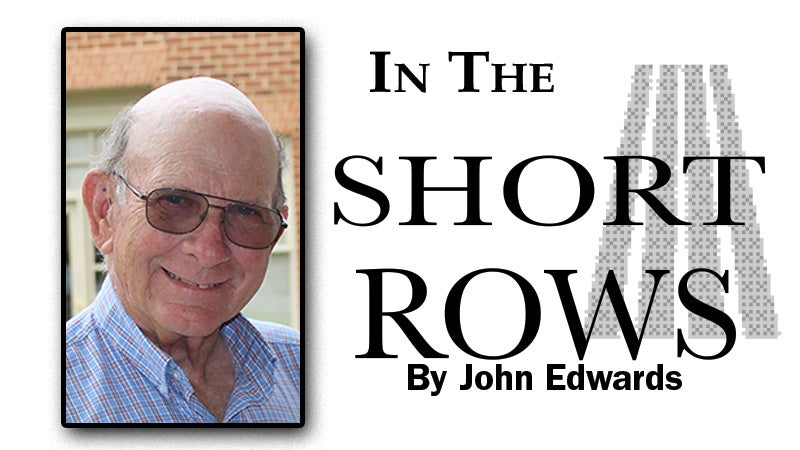The sweet sounds of yesteryear revisited
Published 5:33 pm Tuesday, August 24, 2021
Several weeks ago, we were in the sanctuary of Benn’s United Methodist Church, sitting around chatting while waiting for the 11 o’clock service to begin, when it began raining — and I mean seriously raining.
The church had wisely installed a metal roof a couple of years ago. It’s separated from the exposed beam sanctuary by layers of sheathing and insulation boards, which allow sound to penetrate very nicely.
When the rain became hard, the sound against the roof was pretty dramatic and almost simultaneously, three people said in various ways, “Listen to the rain on the tin roof. That sure brings back memories.” The three didn’t even include me. I just sat and listened, soaking up the sound.
In truth, the new church roof isn’t “tin,” but no matter. The sound it makes, though muffled by the insulation, nicely approximates that of rain on a tin roof. It was just remarkable that so many people would share a common memory, pleasantly triggered by a long-forgotten sound, but that’s the way it is with memories. Sound is second only to smell in triggering them.
Nothing was more likely to put us to sleep back during our youth than the gentle patter of rain on our farmhouse roof. The only thing that could spoil it was a rain accompanied by wind, which meant we would have to close at least some of the windows to keep things dry. That could make an un air-conditioned house close to unbearable.
The sound of rain we experienced at night was like having stereo. The rain on the two-story roof was muffled by the attic over our bedrooms, but there were also tin roofs on the wrap-around porch and a one-story addition that together surrounded our living quarters.
If it rained during the day and we sought refuge under a shed or barn, the sound was even more dramatic. The staccato beat of rain in those instances could be so loud as to prevent normal conversation. But, oh, did it sound good, for it generally meant much-needed water for crops and livestock.
The 1950s of our youth were long before anybody considered irrigating peanut or cornfields, and our little hog farm operation was as basic as small herd operations could be back then. We didn’t even have water lines to all the hog lots. If our fattening hogs were in a pasture and woods lot some distance from the house (which was quite normal), they relied on streams for water. We would dig holes in the streams to provide something akin to a natural watering hole for them, but it was crude, at best.
When it got really dry, the streams would stop flowing. Checking to make sure streams were still running was one of our jobs. When the flow ceased, we were forced to pump well water into 55-gallon drums sitting in the back of an old GMC pickup truck and haul it to the feedlots — carefully, so as not to spill any. Once there, we bailed it out with five-gallon buckets and distributed it to watering troughs.
Those oil drums also served as a dunking booth for us. When it got really hot, we would fill a barrel with water, set a short ladder next to it and climb in, one at a time, to cool off. It was delightful.
If we did have a heavy rain, we would just run to a deep ditch where runoff was collecting and jump in. For a short period, we would have a private pool.
Dry weather also meant that pastures, which generally supplemented our hog feeding system, were quick to die, so we had to rely totally on ground corn or barley for hog sole feed.
Sandy land crops failed quickly during a dry spell, so rain was a blessing on many fronts.
It didn’t take us long to learn that crop failures, coupled with a poor showing by our breeding herd of Hampshire hogs, meant that Santa Claus, for some reason or other, didn’t leave as many gifts that next Christmas. Those he did leave seemed, for some reason, to be among Sears Roebuck’s cheaper toys.
That prospect, among others, taught us early to appreciate rain on a tin roof.
John Edwards is publisher emeritus of The Smithfield Times. His email address is j.branchedwards@gmail.com.


